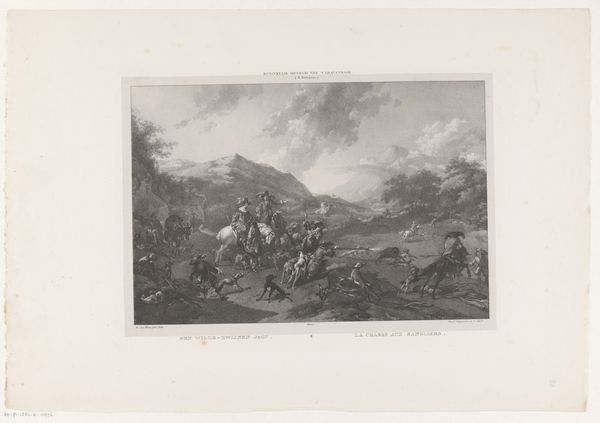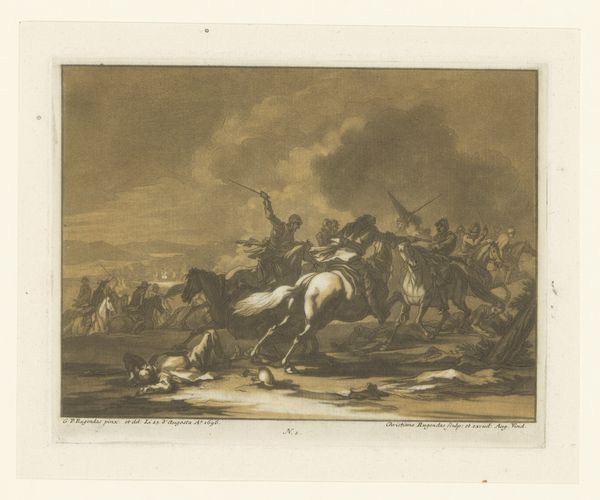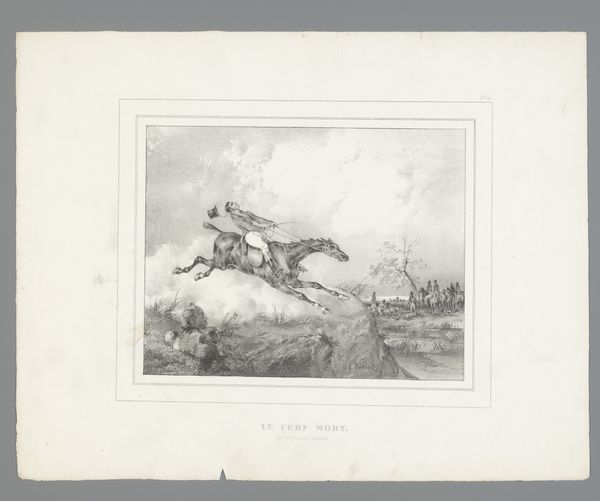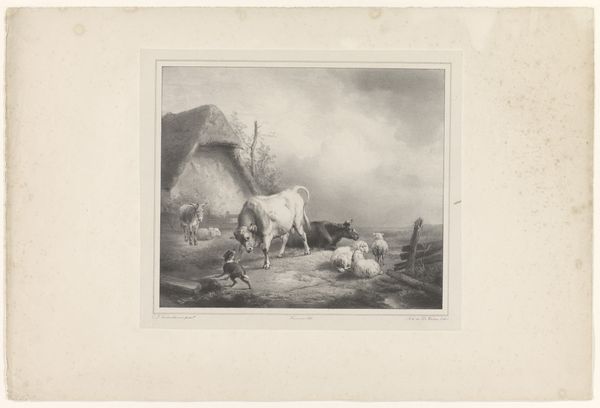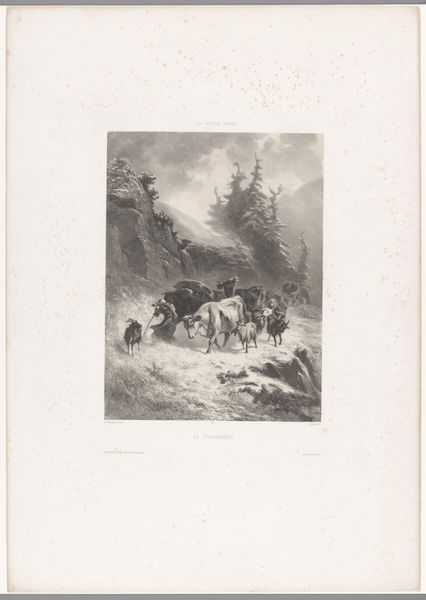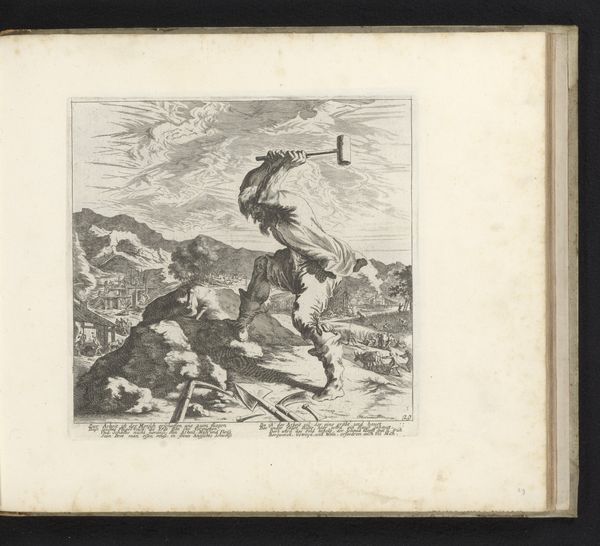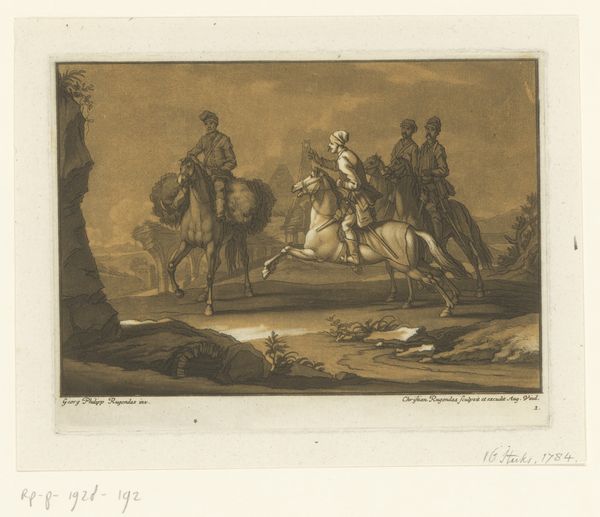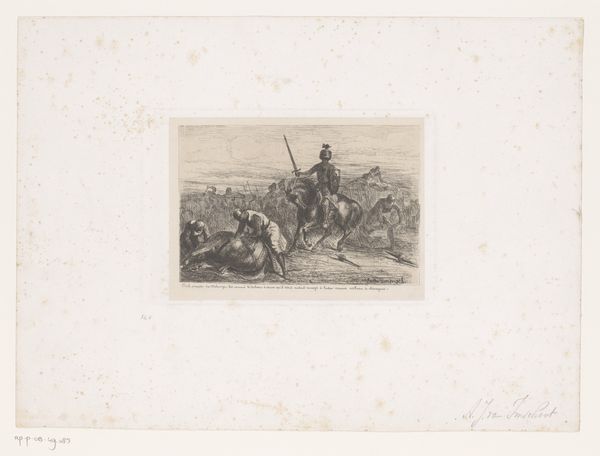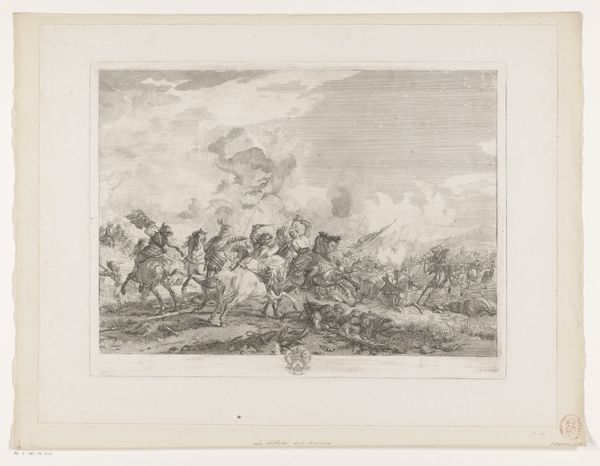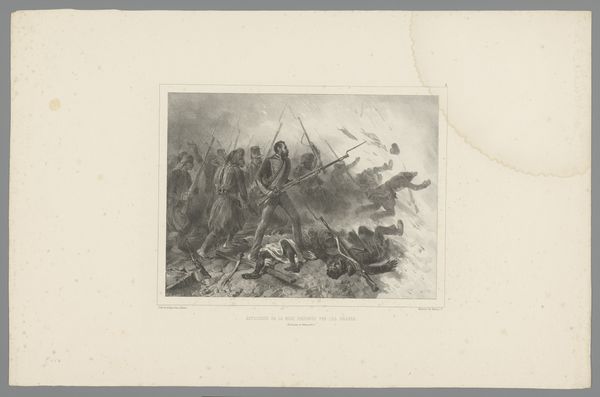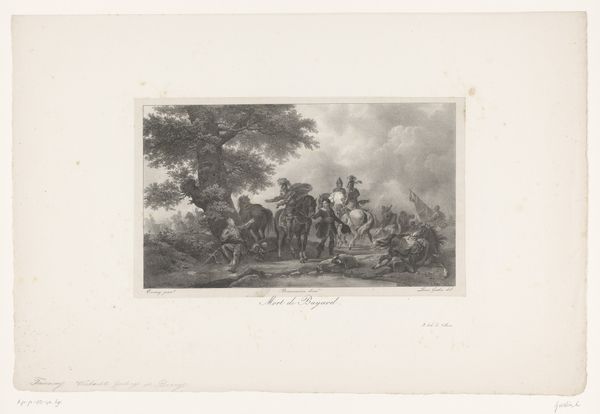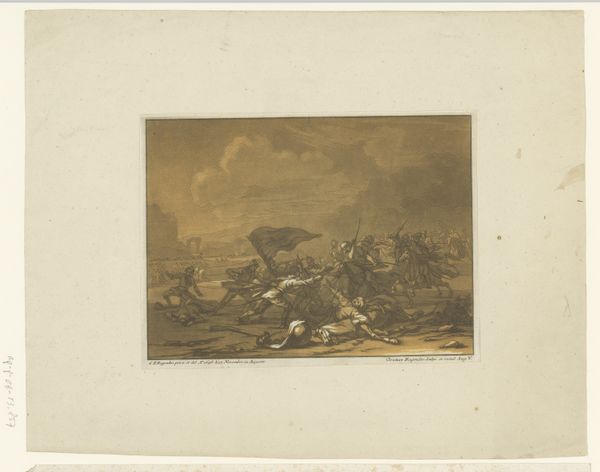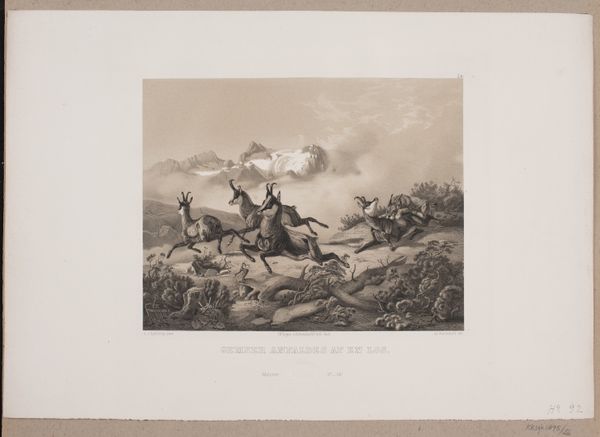
Dimensions: height 405 mm, width 570 mm
Copyright: Rijks Museum: Open Domain
Curator: The artwork before us, located in the Rijksmuseum, is entitled "Aanvallende soldaten te paard" or "Attacking Soldiers on Horseback". Rendered before 1867 by Huib van Hove Bz, this piece utilizes engraving to portray a dynamic, turbulent scene. What are your initial impressions of it? Editor: The first thing that strikes me is the sense of chaos, of violence etched into the material itself. The way the engraver has worked creates this almost oppressive atmosphere – what do we know of the making of these prints, where were they done? Curator: Prints like these were largely commissioned, circulated, and consumed to influence and cement national sentiment, particularly potent after moments of intense social or political change. Think about the role prints played during times of national reformation. This piece seems deeply enmeshed in those types of sentiments and nationalistic pride, even as we see implied loss and damage. Editor: So, mass-produced objects disseminating narratives of conflict – the materiality here becomes crucial. Was van Hove trying to convey the lived experiences, or perhaps some other aim, that was not readily grasped by the commoner? Curator: I think both are crucial aspects here. In understanding romanticism's embrace and glorification of moments from the distant or even recent national past, "Attacking Soldiers on Horseback" embodies an almost operatic depiction of armed conflict as both sublime and horrendous. There's also a potential gendered lens at play here, especially when interpreting such imagery. What does it mean to mobilize masculinity? Editor: Yes, that element of propagandist appeal of it is hard to miss. Consider the work that would have gone into producing the plates to make a picture with so many minute tonal details. The labor and planning necessary for something intended for widespread consumption seems almost paradoxically at odds with its themes of violent upheaval. Curator: I concur; that paradox sits at the heart of a romanticized rendering. To understand its intended and unintended impacts requires not just reading this print as document, but rather reading it as an interpretation of history. What histories do they not capture? Editor: Agreed. Understanding this work necessitates not just deconstructing it formally but acknowledging how it operated within its social and economic framework as a material object circulating throughout society. The implications for contemporary readings are huge. Curator: Absolutely. Engaging with van Hove’s “Attacking Soldiers on Horseback” means engaging in a critical analysis of nationhood itself. Editor: A necessary exercise indeed when engaging with visual relics like this one!
Comments
No comments
Be the first to comment and join the conversation on the ultimate creative platform.

